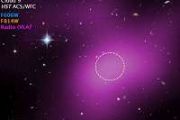The XENON Dark Matter Search Experiment aims to construct a next-generation dark matter detector, which will use liquid xenon as the target material for finding Weakly interacting massive particles (WIMPs). The collaboration is led by the Columbia University.
A 15 kg liquid xenon detector was installed at Gran Sasso underground laboratory in Italy during March 2006, and searchedfor WIMP interactions until October 2007. No WIMP signatures were found, the limits on WIMP-nucleon cross sections extend down to below 10−43cm2 for a 30 GeV/c2 WIMP mass.
The current phase, XENON100, for a total of 150 kg of liquid Xenon, is running at the Gran Sasso Laboratory. XENON100 is expected to achieve a factor of 50 better sensitivity, compared to XENON10. The next generation XENON detector will reach another order of magnitude sensitivity to cover SUSY parameter space down to 10−46cm2 by 2012.
The collaboration is currently designing Xenon1t whose fiducial volume will contain 1 ton of ultra radio-pure liquid Xenon.
Participating universities in XENON100 include: Columbia University (USA), Johannes Gutenberg Universitat, Mainz (Germany), Gran Sasso National Laboratory (Italy), Max-Planck-Institut fur Kernphysik (Germany), Rice University (USA), Shanghai Jiao Tong University (China), SUBATECH, Universite de Nantes (France), University of Bologna andINFN-Bologna (Italy), University of California - Los Angeles (USA), University of Coimbra (Portugal), University of Munster (Germany), University of Zurich (Switzerland),Weizmann Institute of Science (Israel)
Participating laboratories in XENON10 include: Brown (USA), Case Western Reserve (USA), Columbia (USA), Gran Sasso National Laboratory (Italy), Lawrence Livermore National Laboratory (USA), Rice (USA), Coimbra (Portugal), University of Zurich (Switzerland), and Yale (USA).
























































